Ronin Dojo Pro Katana Review
A Detailed Look at the Tsuru Model 3 Katana
By Paul 'Batman' O'Brien
B.A., N.C.E.H.S., Dip. Acu., Adv. Dip. OBB, Cert Clin. Med. Pn1, PN-SSR, PN-NCA, M.AFPA, M.ETCMA, M.C.Th.A.
The Ronin Dojo Pro Katana Review focuses on the Tsuru Edition blade. As usual I've given a brief bit of background on the sword and have included some video footage of my initial impressions along with a brief cutting test demo that you may enjoy.
The Ronin Dojo Pro Katana Review Introduction:
The Ronin Dojo Sword Series is held in very high esteem within the backyard cutting and amateur sword community. It's designed to be the highest possible quality in a sub $350 sword market. I wanted to compare this to more of the higher end and more expensive models I have a see how it held up in terms of cutting functionality.
I also wanted to test the quality of the sword steel and manufacture standards with an eye to the more expensive line Ronin were developing at the time.
The Ronin Dojo Pro Katana Review History:
The Ronin Dojo Pro Katana is the current middle range of the Ronin series. First off however these aren't katana - they are most accurately referred to as katana like, or katana influenced Japanese style blades. They can't be classified as katana for a number of reasons, none of which take away from the beauty or functionality of these swords, but I feel it's important and honest of make this distinction.
Strictly speaking the Ronin Swords aren't katana's because they aren't made in the traditional manner nor with the correct steel. Firstly they are manufactured in Longquan, in China as opposed to Japan. They are mass produced, using power hammers as opposed to hand hammered and forged and finally they are made of 1060 steel, that is tempered but a single steel, and certainly not tamehagene steel.
Tamehagene is the smelted steel used in Japanese Katana's. From a metallurgical point of view traditional tamehagene steel was not as good as modern 1065 or 1090 steel due to the higher carbon content. To get around this high carbon defect in the steel, the metal had to be repeatedly hammered. With each blow carbon is struck out of the steel. This also gives rise to the unique swirling patterns within the steel of the blade itself. I'll expand on this in a future article on sword construction.
In the meantime, if you're interested in some further insights into how these swords are made, Chris Scoggins, the owner of Ronin Dojo Katana's and Paul Southern, owner of the sword-buyers-guide.com recently travelled to the forge in Longquan where these swords are made and got some incredible full access exclusive footage of these swords (and the cheaper rat-tail tang pieces of crap, along with some very high end swords). You can check that out here -
The Ronin Dojo Pro Katana Review Disclosure Statement:
I purchased this model at full price with a view to assessing the blades and the quality of Ronin's work with a view to making a more informed decision about their soon to be launched higher end $1,000 models.
The Ronin Dojo Pro Katana Review Initial Impressions:
I recorded this so you can see EXACTLY what my initial impressions were.
Check Out the Video Below
Firstly this came very well packaged. It arrived in long cardboard box and inside was black box within box with an image of a katana on it. Cute touch. This had been compressed and secured with bubble wrap. On opening the main box I found a black cloth bag secured with three Styrofoam inserts. Of particular note are the securing ties on the cloth bag. They seem to made in the same material and style as a sageo (securing cord of a sword scabbard / saya). This is a lovely touch and one I hadn't seen before.
My first impression of the sword was that it was beautiful. Absolutely beautiful. It is simple and refined in its elegance, the soft brown hue of the silk ito (handle wrap) and the deep brown/red of the koiguchi (mouth of the scabbard, so named because it resembles a fish mouth), the kurikata and the kojiri evoke a sense of autumn. When caught in the right light the buffalo horn glows with a slight reddish undertone.
On drawing the sword (very smooth) the blade was filthy. It was covered in oil, which is good, but unfortunately the oil was dirty and discoloured with wood shavings, grime etc. This may or may not be a problem as it could be obscuring damage to the sword. I'll clean the blade and assess later on.
The habaki (collar of the blade) is also obscured with dirty oil but I think it's scratched.
Again the dirty oil is obscuring the kissaki (the tip of the blade) but it looks to have been damaged and re-bent into place. It's very hard to see but definitely there. Once I clean the blade I'll be better able to assess this.
Overall the blade looks great and beautiful, time for a closer look.
The Ronin Dojo Pro Katana Review Initial Impressions:
As listed by the manufacturer:
- Nagasa: 27" from habaki, 28" from Muromachi (most blades measured from Muromachi).
- Weight: 2.67 lbs
- Tsuka: 11"
- Point of Balance: 5" from tsuba
- Motohaba: 1.2 inches
- Sakihaba: 1 inch
- Motokasane: @ 7mm
- Sakikasane: @5.5mm
The Ronin Dojo Pro Katana Review Composition Assessment:
The Nagasa (Blade): The blade is made from a single piece of 1060 steel. This is very high end steel used for making hard edged and resilient blades. Once I cleaned the blade I found several noticeable bumps on the shinogi (blade ridge line), several small surface scratches and an area of rough ha (cutting edge), nothing a good polish won't correct.
I did however confirm that the very tip of the blade was at once stage bent and has been re-straightened. It's a good repair job, doesn't affect the overall aesthetics of the blade, but I can hear it ever so slightly scrapping the inside of the saya on nukitsuke (opening draw and cut) and noto (re-sheathing the blade).
I was surprised however by how thin the blade was. It's certainly strong and resilient though and made in the dotanuki style. Essentially these are designed, as the name translates, "to cut through torsos".
As these aren't made from tamehagane and repeatedly folded the blade is plain and simple with a nice mirror polish. As they aren't clay quenched there is no hamon nor is there any fake, acid-etched attempt at one.
The Tsuka (Handle): This is a definite high point of the Ronin series. Firstly the tsuka is shaped and fitted. It's comfortable and not too thick. The ito is silk and a lovely shade of brown and is tightly wrapped in a traditional alternating style, though the diamonds were a little uneven. That's not a problem with a tight wrap. Those diamonds though are quite small and in fact I think too small to secure a proper grip.
The ray skin is nicely chosen with, good texture. Unfortunately there is some ever so slight, but definitely noticeable buckling around the upper mekugi pin. That's not a huge problem and it's better to have some buckling then exposed core wood. It's noticeable on the grip though.
The Tsuba (sword guard) is a solid iron piece. Carved in the symbol of two cranes, a common motif in medieval Japan and entirely appropriate for the sword. Given this, and the autumnal feel of the blade I've decided to christen it - 秋クレーン (Aki kurēn).
The Fuchi and Kashira (collar and butt/pommel) are solid iron, which is practically unheard of in a sub $300 sword. They feel solid and secure and give an extra sense of security to the blade. In my model the Tsuru, these are simple and unadorned. On the one hand this is excellent as I love the simplicity, on the other hand it does reveal the cast lines which interrupts the finish.
The Menuki (ornaments) are brass, with a dull warm golden finish, much like the golden leaves of autumn. They look like lions, which is a shame as it interrupts the thematic unity of the piece. Ultimately you won't notice them. One other aspect is their placement on the tsuka. I personally find them a little high and a little lower placed then I'd prefer. That's a matter of personal preference only though and can easily be changed on a re-wrap.
The Habaki (collar) is as I suspected tarnished and scratched. This damage is cosmetic only and of no real importance. Fitting wise it excellent warps the blade and snuggly fits the koiguchi.
The Saya (Scabbard)is balanced top and tails with hand cut and polished buffalo horn. Personally I LOVE the koiguchi, kurikata and the kojiri. They look amazing against the smooth black lacquer of the saya. It's excellently carved and provides a good fit to the blade. One small minor note is the polish on the koiguchi is a little rough, a little polish and no problem. ;-)
The Ronin Dojo Pro Katana Review Functional Assessment:
Oh my.
My first dry swings with the sword produced a quiet but pleasing whistle. This indicates very good sori and polish with a fine thinned edge and after inspecting the blade, even with the minor kissaki bend I was looking forward to cutting with this sword.
The Ronin Dojo Pro Katana Review Tameshigiri:
I've done several rounds of test cutting with this blade and it's a great starter model.
Check Out the Video Below
It's a solid, if light blade and cuts smoothly. I've sliced through multiple bottles and did a solid amount of tameshigiri and sumonogiri on 3 mat tatamai, and even tried it on a 5 mat cut. The blade isn't sharp enough to pass a paper test but I'll look to sharpening it myself some time later.
The Ronin Dojo Pro Katana Review Conclusions and Insights:
For under $300 this is an excellent and honest blade. The iron fittings are excellent, and I quite like the tapered tsuka. The blade is basic and effective. It's a solid piece of kit and a great starter blade.
Pros:
- Low Price
- Iron Tsuba, Fuchi and Kashira
- Strong blade, fairly sharp
- Tapered tsuka
- EXCELLENT buffalo horn koiguchi, kurikata and the kojiri
- Beautiful silk ito
Cons:
- Dirty oiled blade (not serious at all)
- Minor cosmetic issues (casting lines, scratched habaki, menuki placement, same etc)
- Bent (but well fixed) kissaki (slightly more serious)
- Rough shinogi with noticeable bumps
- Rough patch on the ha in line with the bumps. (I'm working under the assumption this was minor damage caused during the pre-dispatch test cut Ronin perform). (Needs a proper polish and sharpening).
The Ronin Dojo Pro Katana Review Straight Cut:
In finishing my Ronin Dojo Pro Katana Review, here are my final thoughts.
It's not a high level blade, but then again it doesn't have a high level price. There are some minor defeats and lower quality issues, but great quality for the price.
This is the blade I introduce new students to cutting with and a fantastic starting point for developing a good sword collection and an appreciation of good quality with key areas that the prospective student can observe and look out for as trouble area's in higher end blades.
I'd also recommend it as an excellent practice blade for developing sword sharpening and customisation skills.
Return from the Ronin Dojo Pro Katana Review to theSword Reviews Page
Click here to return to the Way of the Samurai Home Page
Free Samurai E-books
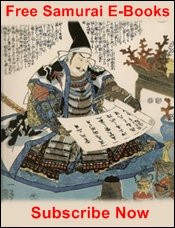
Get Free Exclusive Samurai Guides and E-books
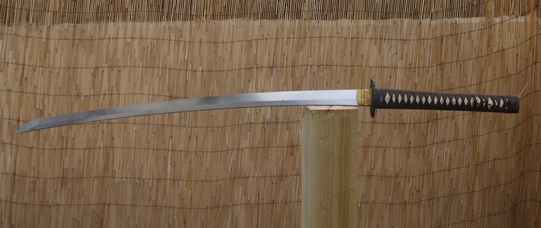
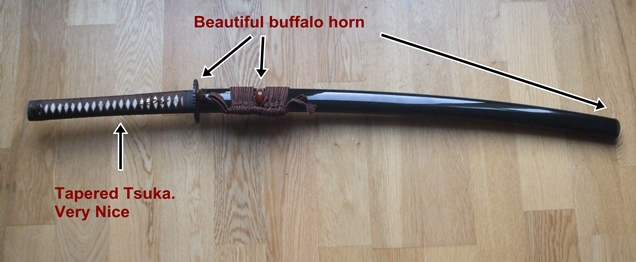
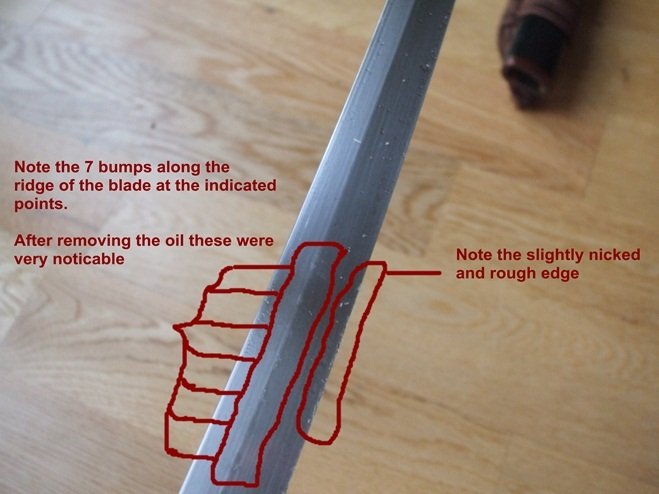
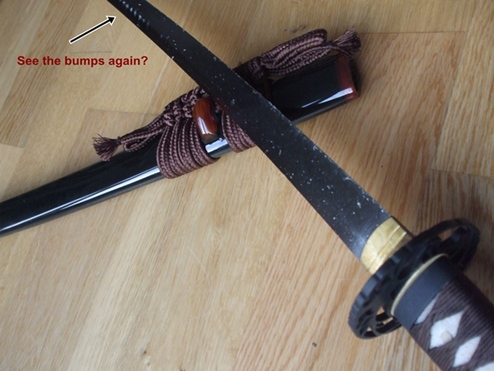
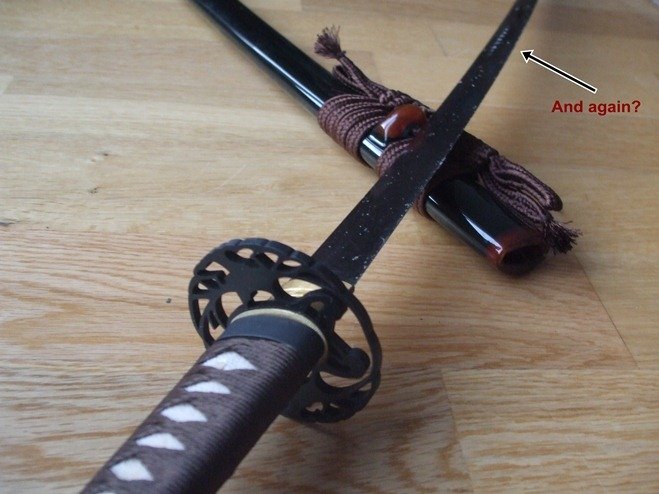
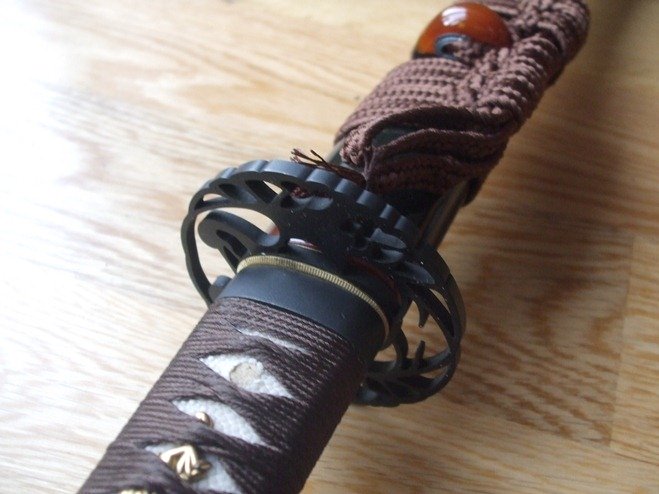
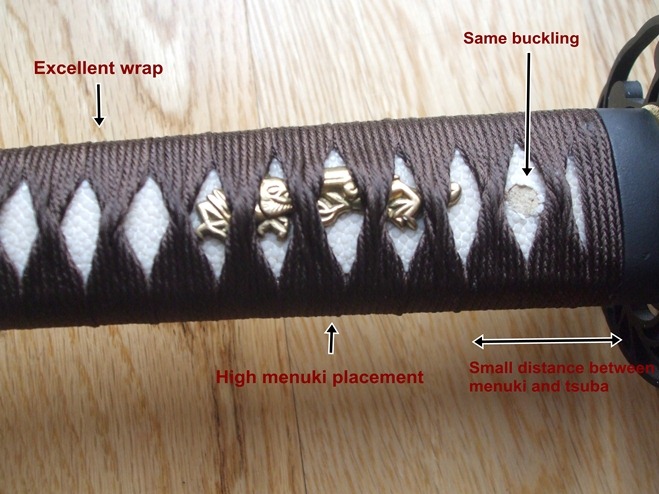
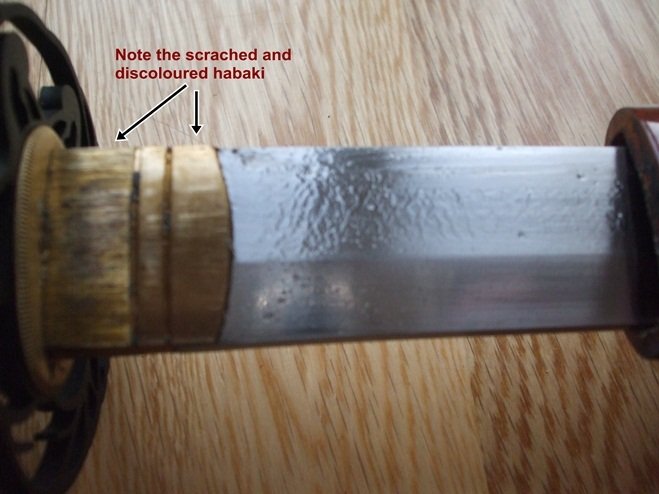
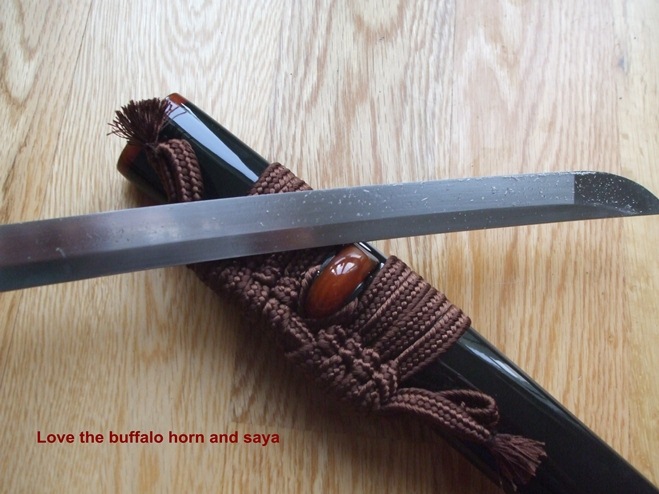
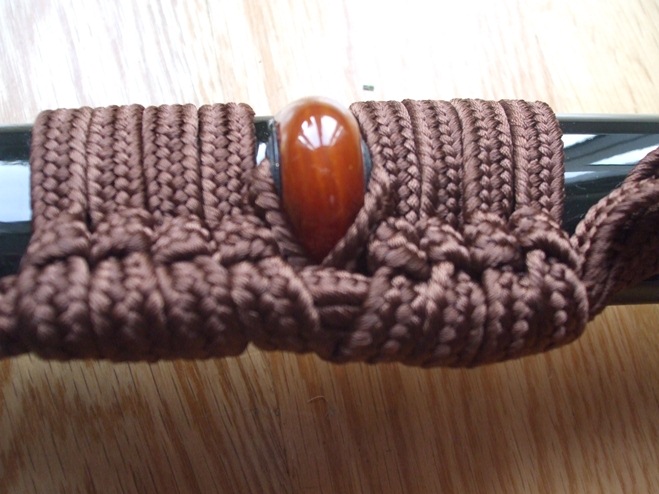
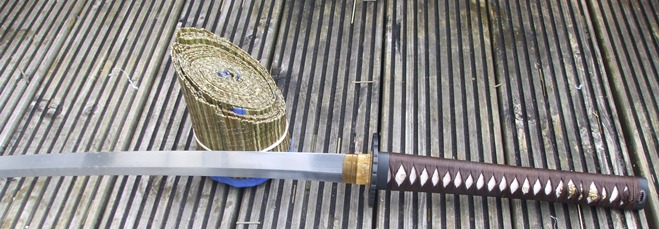





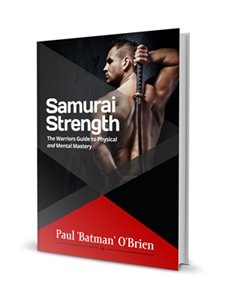
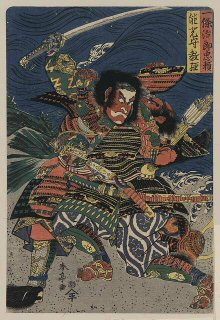
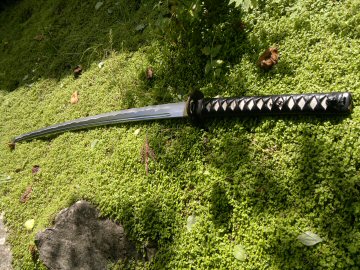
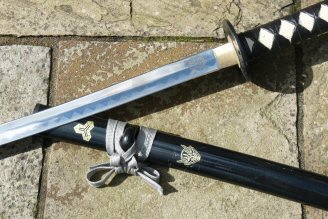
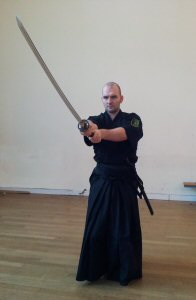
New! Comments
Have your say about what you just read! Leave me a comment in the box below.